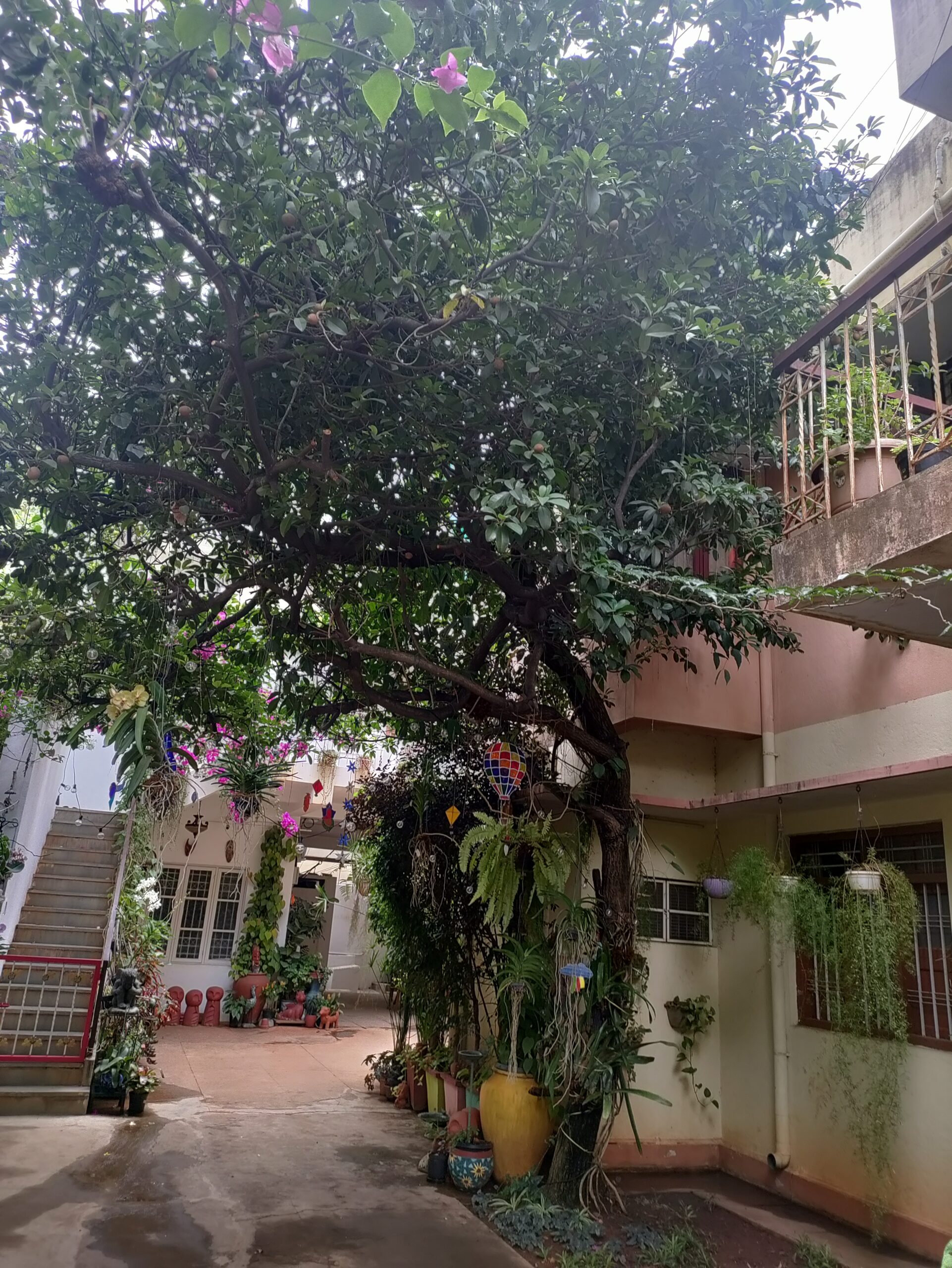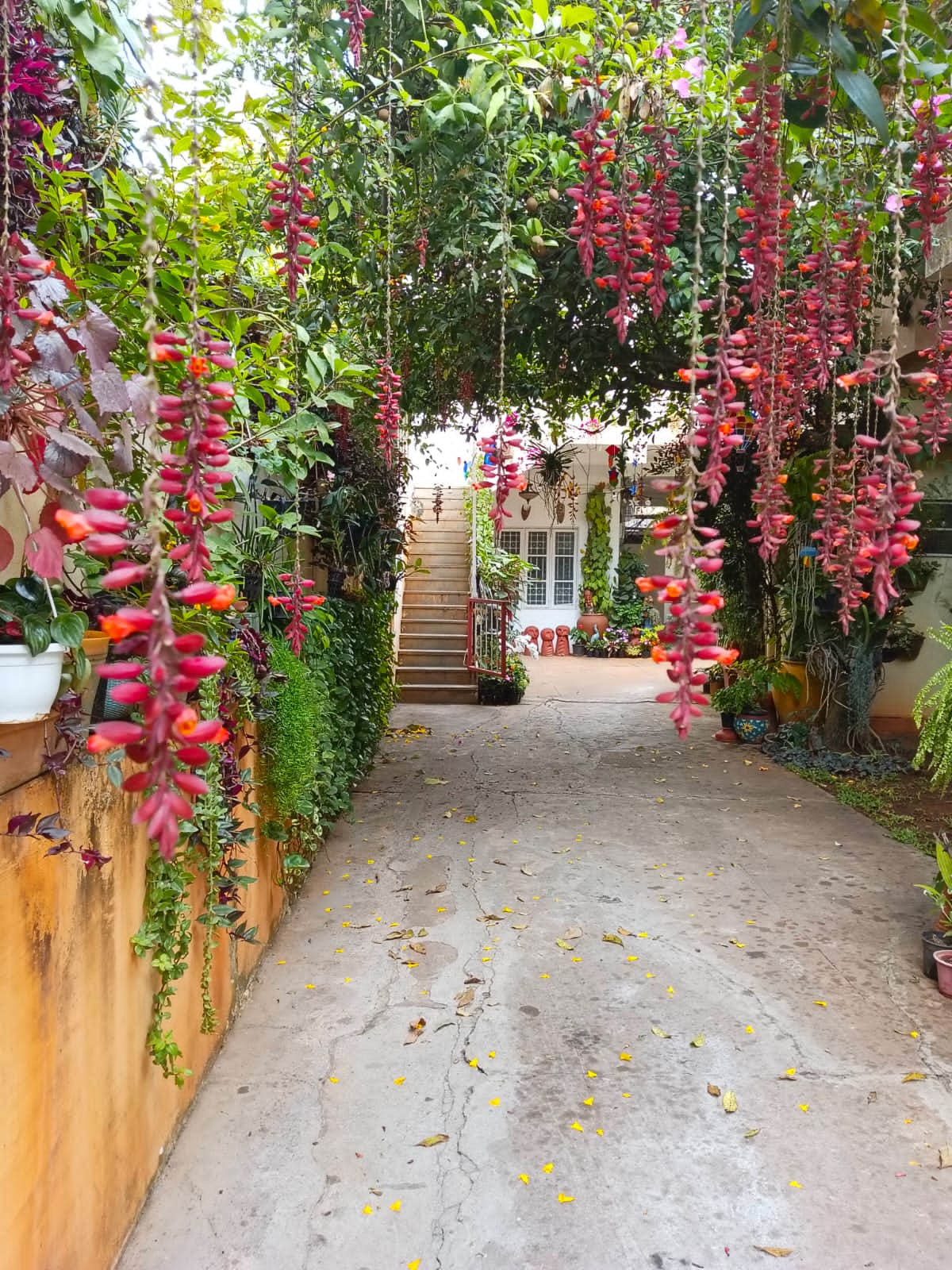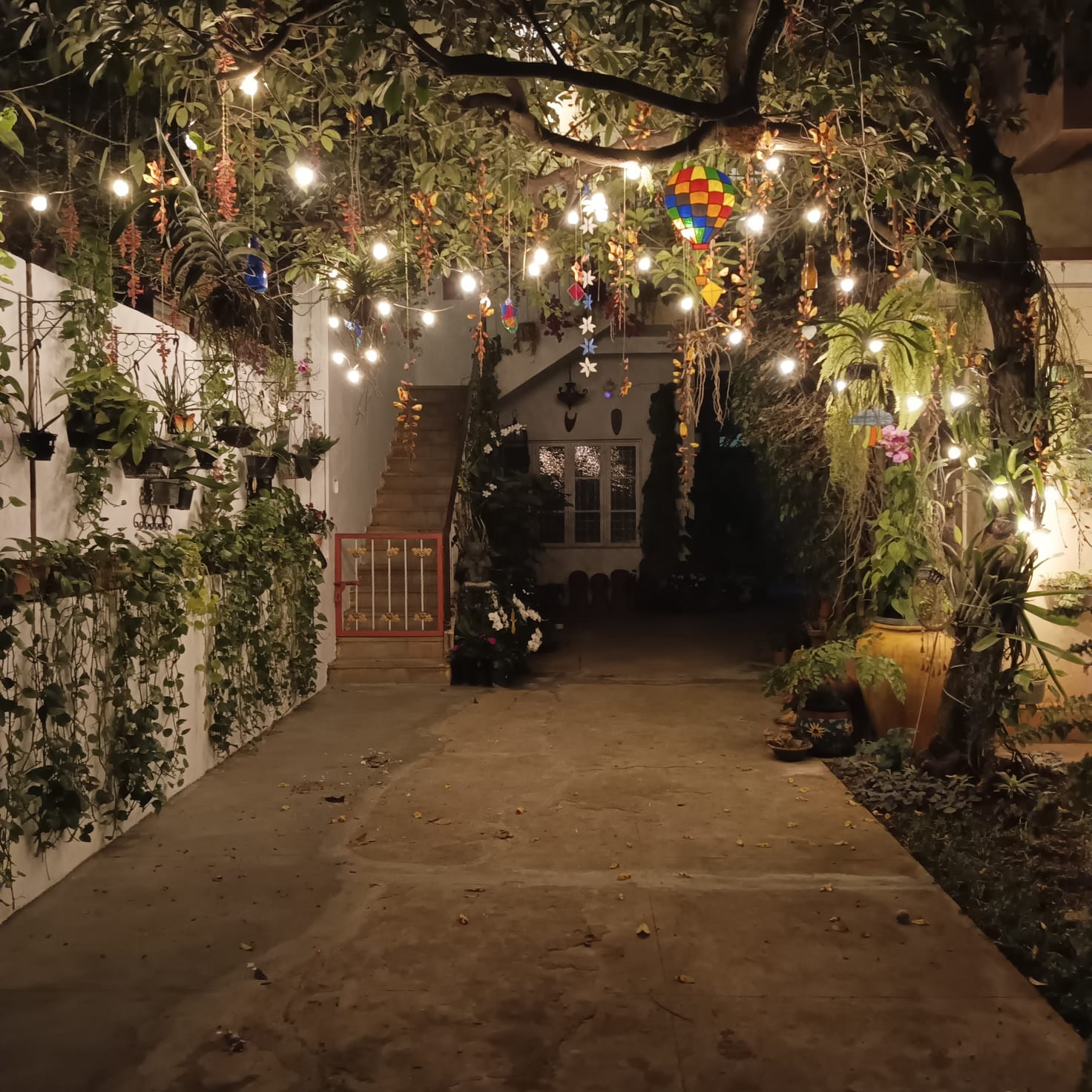In 1975, my mother-in-law, Mrs Janaki Kurup, planted a chikoo (sapota) tree in the garden of the house that she had bought in South Bangalore two years earlier. When I came to the house as a bride in 1979, the chikoo tree was only the size of a large bush, but it was already yielding fruits that were small, but very sweet and tasty. In the early 1990s, major renovation and construction work was undertaken around the original house. This must have been unsettling for the young chikoo tree, but it stood strong. It continued to grow and bear fruits during the two years of disturbances caused by the construction work. The little tree, a leafy evergreen tree, yielded fruits all through the year. So, there were always freshly picked Chikoos on my mother-in-law’s dining table. Visitors to her home were usually gifted a bagful of sweet Chikoos.
In 2000, my mother-in-law, who enjoyed eating her homegrown Chikoos every day, passed away. Two years later, my father-in-law also died. A part of their property was rented out to tenants, and the rest of their home was locked. None of the family members were around to tend to the garden, which became overgrown and unkempt. In 2010, in an unexpected turn of events, my daughter Sanjana, the youngest of the family’s eight grandchildren, returned to Bangalore to live in the family home after she got married. To our astonishment, not only was the chikoo tree still there, but it had grown taller and stronger.

Sanjana is a gifted and enthusiastic gardener, and eventually, the chikoo tree began to get care and attention after years of loneliness and neglect. Sanjana planted bromeliads on the tree’s trunk and hung tillandsias (air plants) from its lower branches. A climbing vanilla orchid, planted at the foot of the Chikoo tree’s trunk, started climbing the tree. The lower branches of the tree were used to hang lush Boston ferns and yellow and pink vanda orchids. A lovely scarlet clock vine (Thunbergia cocinea) and an Indian clock vine (Thunbergia mysorensis) are growing and spreading through the branches of the tree. When the beautiful, showy flowers of these vines bloom, scarlet and yellow flowers festoon the branches of the Chikoo tree, giving it an unusual, exotic look. We have seen passers-by stop and stare at the tree in admiration and puzzlement!

Our Chikoo tree, around fifty years old, is now taller than our double-storied house. Its dense, green canopy spreads across the driveway. It is always laden with fruit. Bulbuls, sunbirds, drongos, parrots, squirrels, and even the occasional monkey comes to feed on the Chikoos. Our cats use the branches of the Chikoo tree as a scratchpad to sharpen their claws. We have threaded a string of bulbs through the lowest branches of the tree, and when they are lit up at dusk, we can see the silhouettes of the fruit bats that come to feast on Chikoos. The tree is decorated with stained glass wind chimes, and during Diwali, we hang kandils and coloured fairy lights on the tree. Last year, a baby was born in our family home after forty years – the original owner’s great-grandson. Our faithful Chikoo tree was festooned with balloons and streamers when his first birthday party was celebrated earlier this year!

I like to think that after years of hardship and struggle, the resilient Chikoo tree is at last, basking in the admiration and love it deserves, and is truly, enjoying its moment in the sun!
Photos by Santhini Govindan
About the author: Santhini Govindan is an award-winning author of children’s literature. She has written more than fifty books for children, including picture books, chapter books, short stories, and poetry for children. Stories and poems that she has written have been published in over one hundred English language readers and are widely used in schools across India, South Asia, and the Middle East.






